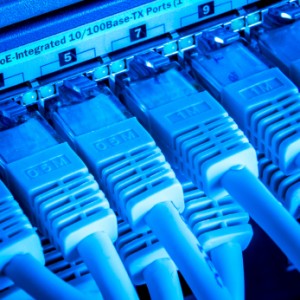Cabling Cleanup & Pickup Service
Contents
What is Your Liability Over Abandoned Cable?
 Building owners all over Los Angeles face new challenges each year in the effort to maintain their commercial buildings and stay in compliance with building codes. In recent years, abandoned network cabling has become an issue because of rapid technological progress. New equipment requires network cabling that can communicate at faster speeds and higher bandwidths. Traditional cabling methods have allowed new cable to be strung alongside abandoned network cable from past communication systems. Rising concerns over ever-increasing fuel loads have created the need for changes in building codes.
Building owners all over Los Angeles face new challenges each year in the effort to maintain their commercial buildings and stay in compliance with building codes. In recent years, abandoned network cabling has become an issue because of rapid technological progress. New equipment requires network cabling that can communicate at faster speeds and higher bandwidths. Traditional cabling methods have allowed new cable to be strung alongside abandoned network cable from past communication systems. Rising concerns over ever-increasing fuel loads have created the need for changes in building codes.
Building Code Requirements
The National Electric Code, or NEC, and several other codes written by the National Fire Protection Association were enhanced to include the expanding issues caused by abandoned cable in office buildings and other commercial buildings. New requirements have been added to encourage all building owners to remove abandoned fiber optic and copper cable from concealed spaces. The requirements do not have legally binding effects, but jurisdictions across the country have adopted these codes. Every jurisdiction does have the legal authority to enforce the codes for buildings within their jurisdictional boundaries.
2002 NEC – Paragraphs 800.2 and 770.2 — Abandoned cable is defined as “installed communications cable that is not terminated at both ends at a connector or other equipment and not identified ‘for future use’ with a tag.”
Considerations for Abandoned Cabling
All Los Angeles building owners carry the liability for the abandoned wiring left behind by previous tenants. Failure to remove cable causes a series of issues that can be avoided by following the best practices for maintenance and exhibiting reasonable judgment. Attempts to avoid the issues surrounding abandoned cabling can be extremely costly in litigation.
- Increased fuel load – Office buildings can have anywhere from two to eight inches of unused cabling in the plenum and riser spaces. Fire investigators have determined that fire spreads rapidly through these spaces. Abandoned wiring provides large quantities of fuel that cause more damage than necessary to the structure in a fire.
- Reduced HVAC airflow – Continually adding more cables in the HVAC ducts will reduce the efficiency of the heating and cooling systems. Utility costs will rise without benefits to the inhabitants of the building.
- Difficulty in new wire installation – Attempts to run new cable are inhibited by dozens of strands of abandoned cable. Finding space in the plenum and riser areas becomes more challenging with each subsequent cable installation project. Some projects are delayed by efforts to remove cable.
- Presence of combustible cable – Old cable materials are not fire resistant, which adds danger if the cabling catches fire. Noxious fumes are produced by sub-standard cabling that should not be present in the building.
Building owners are wise to assess the network cable present in the building when the current tenant leaves. All abandoned network cabling should be removed immediately. Subsequent tenants can be held responsible for removing all cable installed during their tenancy. The building will be safer for the inhabitants and easier to maintain for the building owner.


